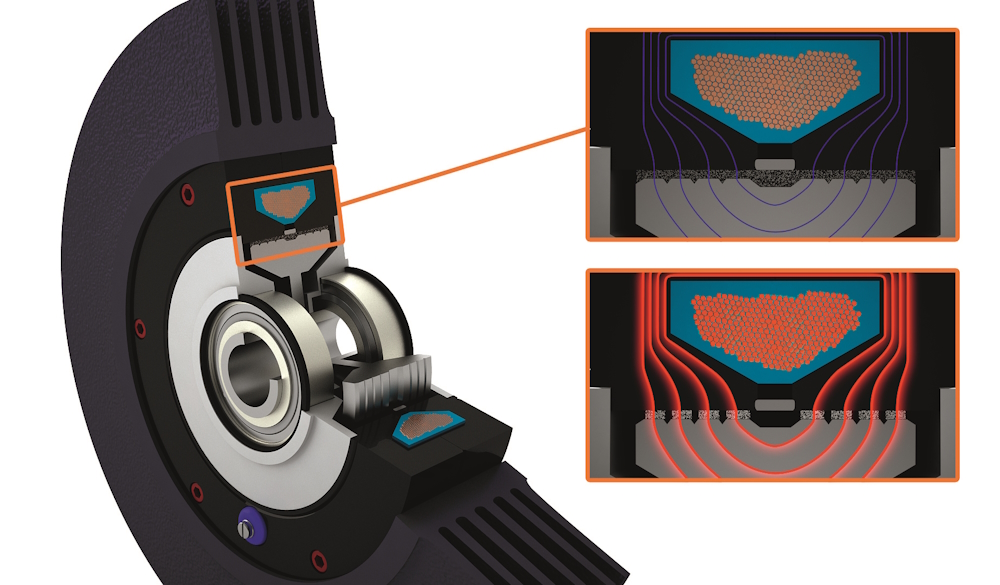
As you invest in advanced wire and cable manufacturing equipment to capitalize on the growing demand from the electric vehicle, clean energy and data communications industries, it’s important to remember that your choice of a tensioning system will go a long way in determining production efficiency and product quality. While various brakes can produce tension for creating a desired wire process, a proper pitch between braids, or smooth winding and unwinding of spools, magnetic particle brakes in particular offer an exceptional combination of smooth torque output, precision, compact size and cleanliness.
This blog post will explain how magnetic particle brakes operate along with their advantages over other brake types, and it will provide an example of how one Redex customer successfully uses magnetic particle brakes on an expansive operation.
How Magnetic Particle Brakes Work
When direct current is applied to a coil, magnetic powder within the brake’s air gaps binds together to form chains connecting the brake’s inner rotor and outer housing. The strength of the particle chains is directly proportional to the magnetic field and is also directly proportional to the applied current. Thanks to this operating principle, magnetic particle brakes offer wire and cable manufacturers a host of advantages such as:
- Low power and high torque. magnetic particle brakes typically operate under 24V DC. For example, with 1.7A, they can generate 1,000 Nm of torque or 900 ft/lb.
- Compact size. These brakes deliver high torque output for their low power consumption. They also offer the highest torque density per size, offering easy integration. In addition, magnetic particle brakes typically do not require air or hydraulic fittings.
- Precise torque control and positioning. Magnetic particle brakes combine superior torque control that is independent of the slip speed. Taken together with fast response and smooth motion, they ensure consistent, repeatable processes.
- Clean and wear-free. The brakes’ magnetic action does not — unlike friction brakes — generate dust particles, keeping products and work environments clean and safe.
Although various brake types are appropriate for wire and cable tension applications, magnetic particle brakes deliver these features without the drawbacks typical of other options. Not only do they eliminate wear and friction, they also do not depend on pressure to produce torque. Instead, their linear torque variation is proportional to the electric current for simple and consistent tension control — an important factor when unwinding spools with decreasing product diameter requires continuous adjustment to maintain constant product tension. Magnetic particle brakes also require fewer signals to control torque, allowing machine designers to avoid the complex controls that are typical of motor solutions.
Application Example: Three-Stage Braiding Machines
Constantly adjusting and replacing dirty and worn pads on hundreds of friction-type brakes is time consuming and very inefficient. For example, one Redex customer manufactures composite pipes for the oil and gas industry and builds its own braiding machines to apply protective fiberglass to the cables. Each braiding machine has three stages and requires 32 brakes per stage. Seeking to improve efficiency and cleanliness, they turned to Redex for a Merobel magnetic particle brake solution.
Redex leveraged their extensive experience in unwinding and rewinding applications to tailor-make and deliver hundreds of custom magnetic particle brakes in just six months, with hundreds more on the way. These brakes have provided a huge relief for our customer, who reports tremendous results and is designing a new braiding line with Merobel magnetic particle brake components.
With Merobel magnetic particle brakes and Redex expertise, you can achieve the precise tension control your wire and cable equipment needs, all in a simple, compact solution using Merobel magnetic particle brakes, controls and sensors.
For more information about Merobel magnetic particle brakes from Redex, visit our product page.
